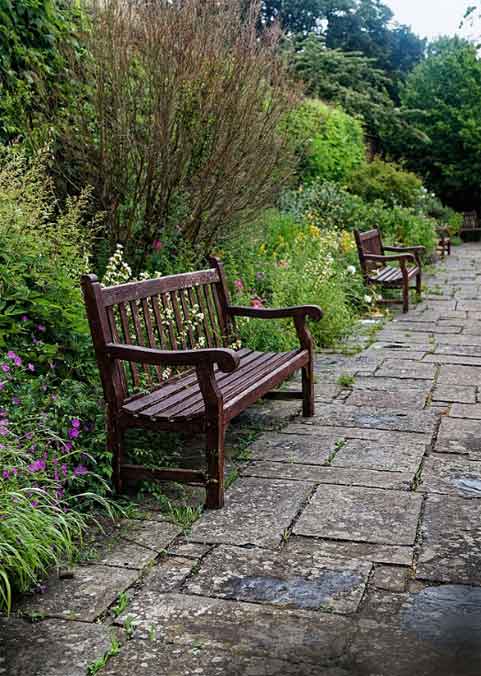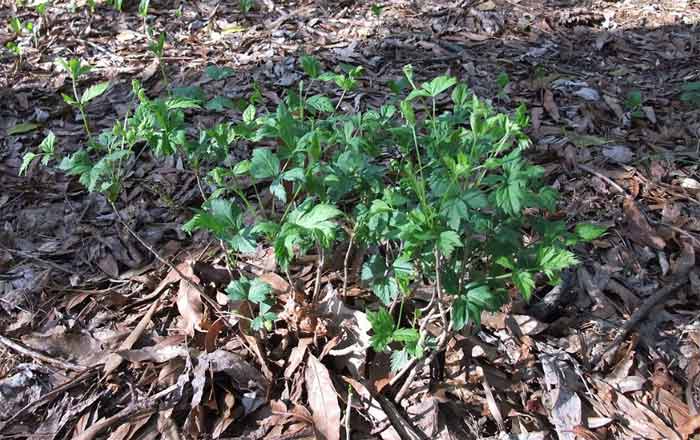Growing yellowroot (Xanthorhiza simplicissima) in the home garden

Yellowroot is native to America
Xanthorhiza simplicissima, or yellowroot, is a perennial plant that is found in moist, shady woodlands from Pennsylvania to Florida. It is a member of the buttercup family (Ranunculaceae) and grows to be about 1-3 feet tall.
The leaves are pinnate, with three or five leaflets, and the flowers are small and purple. Yellowroot blooms in early spring, from March to April.

Growing yellowroot at home
Yellowroot is a relatively easy plant to grow, but it does have some specific requirements. It prefers moist, well-drained soil that is rich in organic matter. The pH of the soil should be neutral to slightly acidic. Yellowroot also prefers partial shade, but it can tolerate full shade. The best fall color occurs with some sun.
To plant yellowroot, start by preparing the soil. Amend the soil with compost or other organic matter to improve drainage and fertility. If the soil is too alkaline, you can add sulfur to lower the pH. Space the plants about 1-2 feet apart.
Yellowroot prefers to grow on a shady creek bank, so plant it near water if possible. You may have to water your plants until they become established.
Yellowroot is especially useful for growing in beds and borders, cottage gardens, woodland gardens, on banks and slopes, along ponds and streams, or as a groundcover.
Steps for growing yellowroot
- Choose a planting site that receives partial to full shade and has moist, well-drained soil.
- Amend the soil with compost or other organic matter to improve drainage and fertility.
- Plant the yellowroot rhizomes in the spring or fall, 2-3 inches deep and 12-18 inches apart.
- Water the yellowroot regularly, especially during the first year after planting.
- Mulch around the plants to help retain moisture and suppress weeds.
A pest free and beautiful plant
Yellowroot is a low-maintenance plant that does not require a lot of fertilizer or pruning. Yellowroot is also deer-resistant and is also relatively pest-free.
Yellowroot is a beautiful and easy-care plant that is a great addition to any garden.
It is also a valuable medicinal plant that has been used by Native Americans for centuries. The stems and roots are made into tea for treating everything from urinary problems to gum disease. Yellowroot is also a blood purifier and to boosts the immune system.
Safety Information
Yellowroot is generally considered safe when used in moderation. However, it should not be used by pregnant or breastfeeding women, or by people with kidney or liver disease.
If you are considering using yellowroot for medicinal purposes, it is important to consult with a healthcare professional.
I hope this blog post has helped you learn more about how to grow Xanthorhiza simplicissima (yellowroot). If you have any questions, please feel free to contact me by email.
Visit my main yellowroot page to learn the medicinal uses for yellowroot, how to prepare it, and to purchase bundles of yellowroot for making tea.
See this page to purchase yellowroot chips.
Read about hunting wild yellowroot in the Appalachian Mountains.
Sources:
https://njaes.rutgers.edu/plant-of-the-month/yellowroot.php
https://plants.ces.ncsu.edu/plants/xanthorhiza-simplicissima/
Blessings to you and yours!
Thanks so much for reading my blog. Jan.

*Note - the information on this website has not been evaluated by the Food and Drug Administration.
© 2005-2024 website design and content by Janice Boling